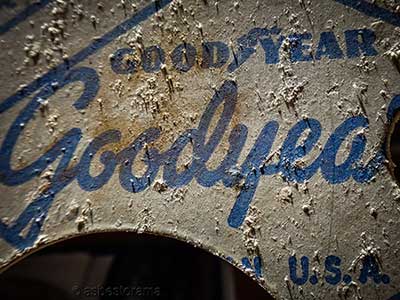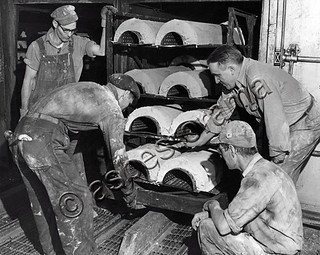Based on Your Reading:
Get Your Free Mesothelioma Guide

Find a Top Mesothelioma Doctor

Access Help Paying for Treatment

Major suppliers of asbestos-containing products include Johns Manville, National Gypsum Company and Armstrong World Industries. Many companies involved in manufacturing and chemical-refining also relied heavily on asbestos at their facilities.
Written by Daniel King • Edited By Walter Pacheco • Scientifically Reviewed By Diana Zuckerman, Ph.D.
The Mesothelioma Center at Asbestos.com has provided patients and their loved ones the most updated and reliable information on mesothelioma and asbestos exposure since 2006.
Our team of Patient Advocates includes a medical doctor, a registered nurse, health services administrators, veterans, VA-accredited Claims Agents, an oncology patient navigator and hospice care expert. Their combined expertise means we help any mesothelioma patient or loved one through every step of their cancer journey.
More than 30 contributors, including mesothelioma doctors, survivors, health care professionals and other experts, have peer-reviewed our website and written unique research-driven articles to ensure you get the highest-quality medical and health information.
My family has only the highest compliment for the assistance and support that we received from The Mesothelioma Center. This is a staff of compassionate and knowledgeable individuals who respect what your family is experiencing and who go the extra mile to make an unfortunate diagnosis less stressful. Information and assistance were provided by The Mesothelioma Center at no cost to our family.LashawnMesothelioma patient’s daughter


King, D. (2024, April 18). Asbestos Manufacturers. Asbestos.com. Retrieved April 18, 2024, from https://www.asbestos.com/companies/
King, Daniel. "Asbestos Manufacturers." Asbestos.com, 18 Apr 2024, https://www.asbestos.com/companies/.
King, Daniel. "Asbestos Manufacturers." Asbestos.com. Last modified April 18, 2024. https://www.asbestos.com/companies/.
Beginning in the late 1800s, American companies, such as Johns-Manville, amassed great wealth by mining, manufacturing and selling asbestos-containing products.
A century later, evidence revealed Johns-Manville and numerous other companies not only knew about the potentially deadly effects of asbestos exposure but also went to great lengths to conceal the information from workers and consumers.
The asbestos industry prioritized corporate profits over public health and the value of life.
During the middle decades of the 20th century, asbestos materials were prevalent in U.S. industries including shipbuilding, construction, power generation and heavy manufacturing.
But a wave of personal injury claims in the 1970s drove hundreds of asbestos suppliers and companies to bankruptcy. Overwhelmed by claims against them, they set up asbestos trust funds to cover the costs of current and future lawsuits.
Concerns about the diseases caused by asbestos exposure prompted more than 50 nations — including the entire European Union — to ban or severely restrict asbestos use. Strict U.S. regulations took hold in the 1970s.
Get Your Free Mesothelioma Guide

Find a Top Mesothelioma Doctor

Access Help Paying for Treatment

Although asbestos mining existed for thousands of years, it was only during the Industrial Revolution of the 1800s that the industry flourished. Asbestos’ natural resistance to heat, chemicals and electricity made the fibrous mineral desirable for innumerable industrial applications.
Manufacturers first incorporated asbestos insulation into steam engines, piping and locomotives. Thousands of other uses later emerged, and asbestos manufacturers began putting it in products such as boilers, gaskets, cement, roofing materials and automotive brake pads.
By the early 20th century, some asbestos companies realized their primary source of income was severely injuring employees and consumers. But rather than improving workplace safety standards, executives ignored information that would damage their business and reputation.
Internal documents indicate Johns-Manville executives were aware of the risks as early as 1934. The company conducted private medical studies on asbestos exposure around this time, and they kept the incriminatory results confidential. It was an asbestos cover-up that lasted decades.
Asbestos use increased throughout World War II, largely because of military shipbuilding contracts. The U.S. government required U.S. Navy and Coast Guard vessels use asbestos insulation.
Decades after the war, hundreds of asbestos companies grew and prospered by incorporating asbestos in thousands of industrial and household products.

During the peak era of asbestos consumption, the toxic mineral was incorporated into approximately 3,000 types of products. One of the most common commercial applications was insulation products for construction, shipbuilding and industrial manufacturing.
Countless other types of building materials were manufactured with asbestos, including ceiling tiles, joint compounds, cement, drywall and roofing materials. To this day, these building products have a high potential to release toxic fibers into the air during renovation and demolition work.
Asbestos has also been spun into various textile products such as rope, cloth and garments. Shipyard workers who installed asbestos insulation often wore protective gloves and aprons that also contained the dangerous ingredient.
Another leading sector that continues to use asbestos materials is the automotive industry. Many car parts that withstand high temperatures and friction, such as gaskets and brake pads, may still contain some asbestos.

According to the World Health Organization, about 125 million people have experienced workplace asbestos exposure worldwide. By far, the most dangerous occupations involve mining and processing the mineral. These activities release massive amounts of toxic fibers into the air.
Another industry with high exposure risks is construction. American drywall hangers and insulation workers faced constant asbestos exposure risks, and many other professions related to carpentry may have been exposed while working at the same site.
Shipyard workers, especially during the World War II era, experienced heavy exposure as well. Asbestos insulation was once a staple aboard seafaring vessels, and the cramped working conditions made its installation especially hazardous. Also at risk were pipefitters, boiler workers and electricians who serviced Navy ships.
By the 1960s, scientists had gathered ample evidence of asbestos’s harmful effects. A landmark occupational study conducted by Dr. Irving Selikoff in 1964 showed a clear link between the mineral and various types of cancer.
The research indicated that between 1943 and 1962, an excessive number of insulation workers died of asbestosis and malignant diseases such as lung cancer, mesothelioma, stomach cancer and colorectal cancer.
More medical evidence came in to bolster Selikoff’s findings, and the result was a significant downturn for America’s asbestos industry.
The U.S. Environmental Protection Agency dealt another blow to the industry with the Clean Air Act of 1970. It established the National Emission Standards for Hazardous Air Pollutants (NESHAP), which placed stringent restrictions on the use of asbestos and other harmful airborne contaminants.
Several new regulations directly affected the industry, specifically companies that milled, sprayed or disposed of asbestos materials. By the late 1970s, many companies began phasing the mineral out of their products.
Even with bills and other legislative efforts to ban the mining and production of asbestos resounding across the world, the industry continues to thrive. Russia, China and Kazakhstan still mine and sell massive quantities of the toxic mineral on a global scale.
According to a 2011 inventory of more than 60,000 asbestos-laden products, approximately 600 companies and suppliers operated worldwide that year.
The U.S. Geological Survey asserts that U.S. asbestos use has fallen 99.9% since 1973. March 2024, the Biden administration finalized a ban of chrysotile asbestos. The ban allows companies 12 years to phase out the use of the material during the manufacturing process. This new ban also doesn’t apply to all types of asbestos.
Limited amounts of chrysotile asbestos remain in various textiles, building materials such as cement, and brake pads and other friction materials. The U.S. chloralkali industry continues to import chrysotile asbestos for use in chlorine production, with annual asbestos imports at 750 tons in 2018.
The U.S. Environmental Protection Agency completed a risk assessment of current asbestos uses in the U.S. in 2019. The agency is currently working to propose and finalize actions to address risks.
A staggering number of asbestos lawsuits surfaced over the past half-century, jeopardizing the assets of any company associated with asbestos. According to one report, by 2002 an estimated 730,000 people had filed asbestos-related claims against at least 8,400 corporations.
According to a 2021 KCIC litigation review, there were 3,685 asbestos lawsuit filings in 2020, a 11% decrease from 2019. The majority of filings were related to mesothelioma (1,827 lawsuits), followed by asbestos-related lung cancer (1,484 lawsuits).
Some asbestos litigation has resulted in multimillion-dollar verdicts or out-of-court settlements. When courts find asbestos companies liable for a person’s injury or death, the companies must provide compensation for medical expenses, lost income, loss of consortium and pain and suffering. A qualified mesothelioma lawyer can help patients file a claim for compensation including asbestos trust funds.
Many times courts also demand additional punitive damages from companies to discourage future wrongdoing.
While the use of asbestos dates back to ancient times, companies such as Johns Manville started using it to manufacture fire-resistant roofing in 1858. Other American companies also began mining, manufacturing and selling asbestos-containing products in the late 1800s.
Manufacturers are still developing products containing asbestos, such as gaskets and brake pads. Products containing less than 1% of asbestos are not required to display a warning label to consumers.
Countries around the world without an asbestos ban include:
Asbestos companies are being held responsible for negligence and harm caused by exposing their workers and consumers to toxic substances that cause mesothelioma cancer. Mesothelioma compensation is available to anyone with a confirmed diagnosis and a history of asbestos exposure.
Companies that specialize in asbestos removal are called asbestos abatement companies. These professionals are licensed and trained in safety standards for properly handling asbestos without risking exposure to themselves or the building’s occupants.
Those looking to hire an asbestos abatements company should contant a local team of professionals and ask about their qualifications and specialties, such as environmental services, demolition services and general contracting services.
Your web browser is no longer supported by Microsoft. Update your browser for more security, speed and compatibility.
If you are looking for mesothelioma support, please contact our Patient Advocates at (855) 404-4592
